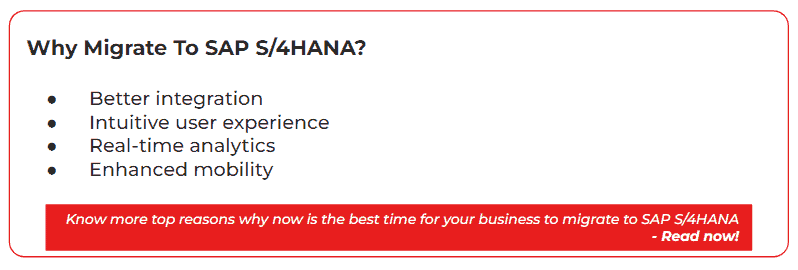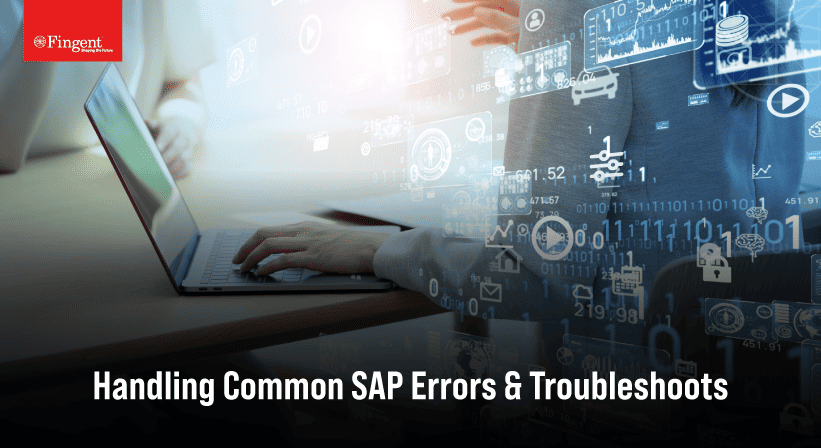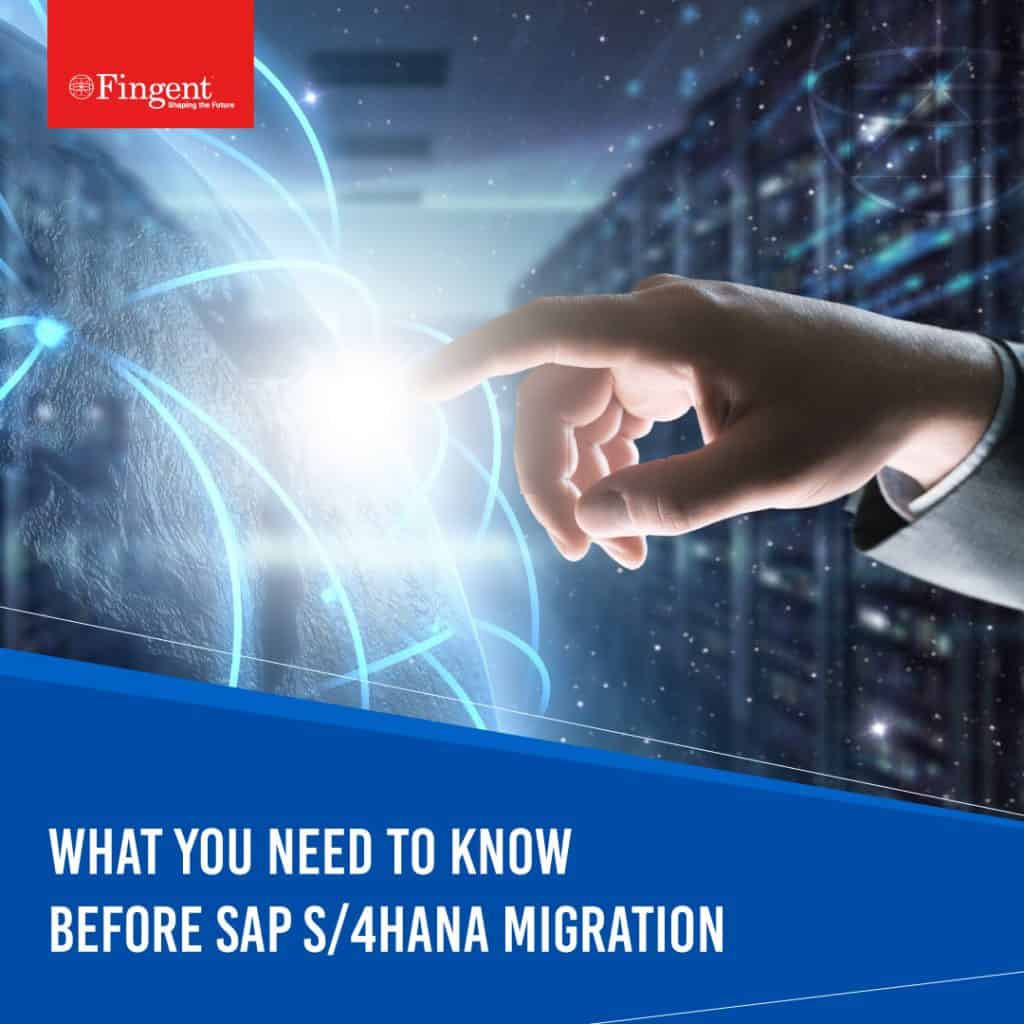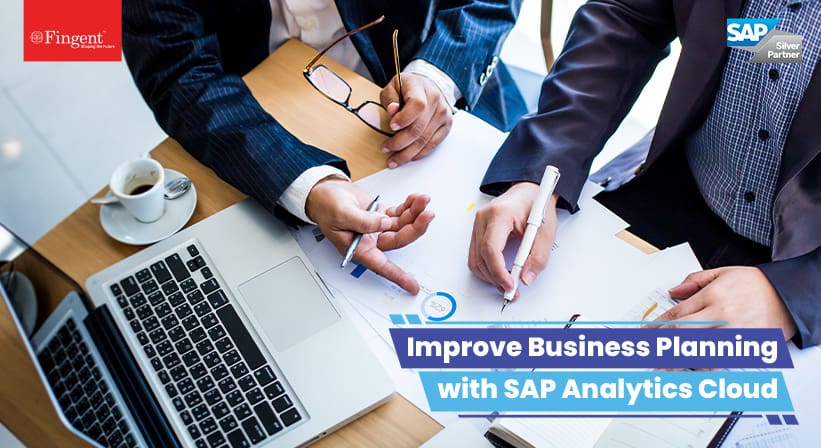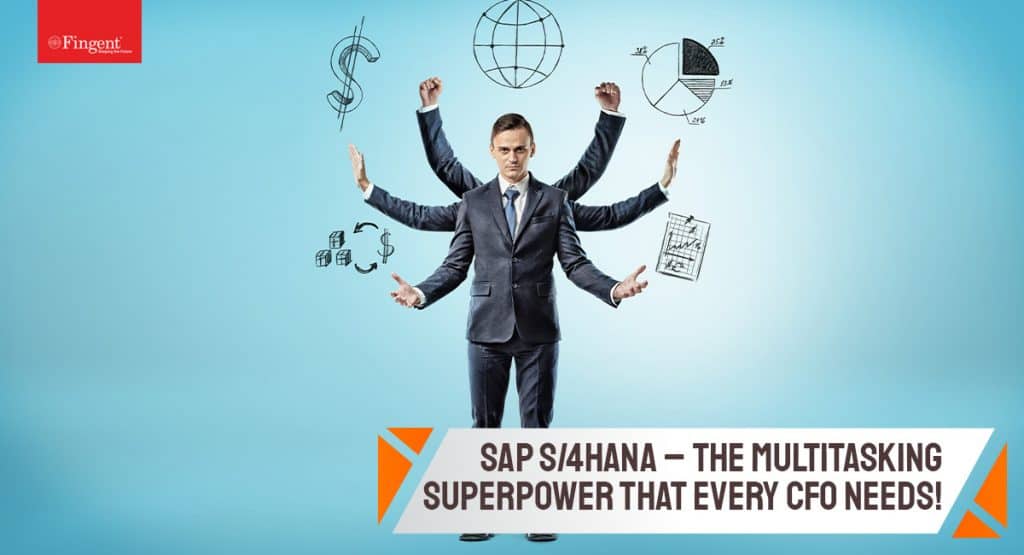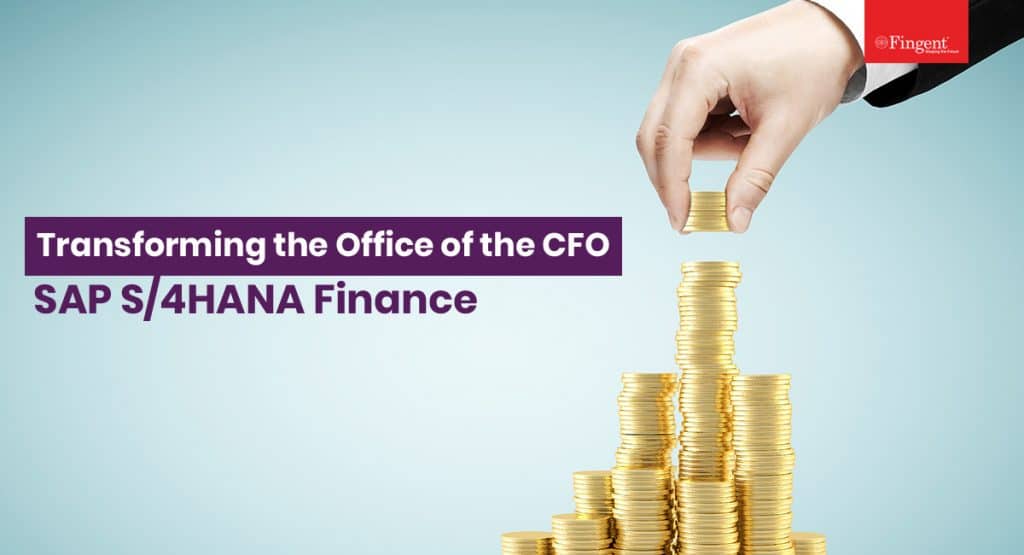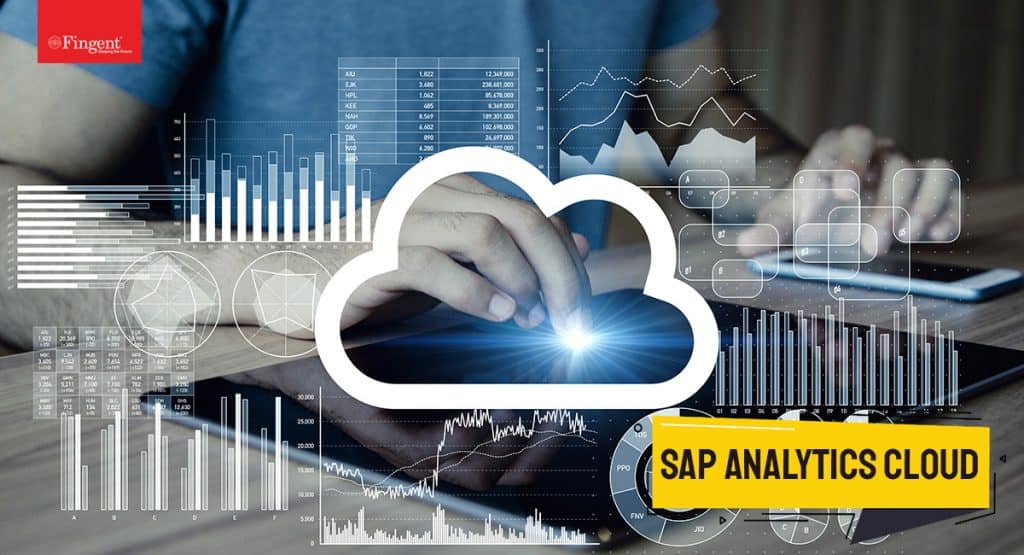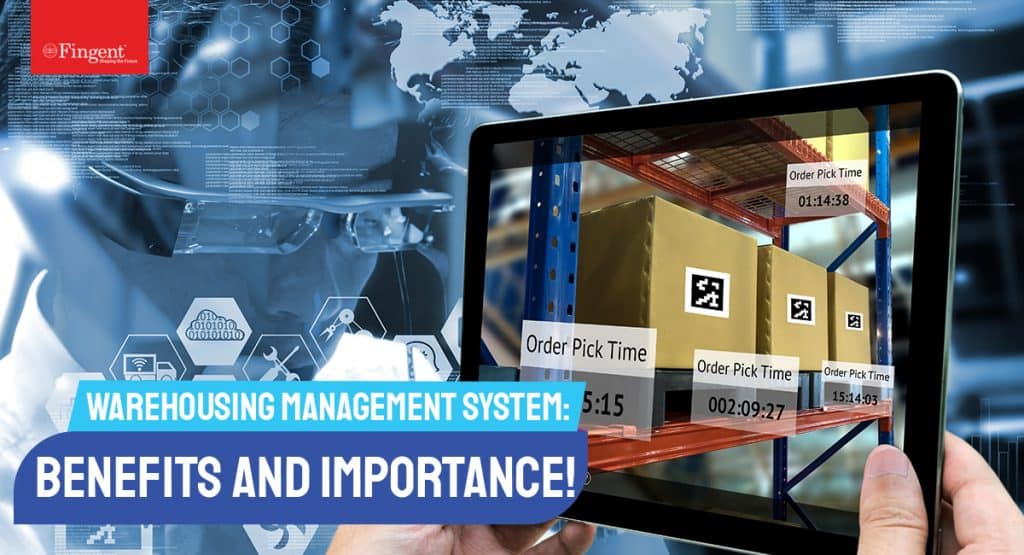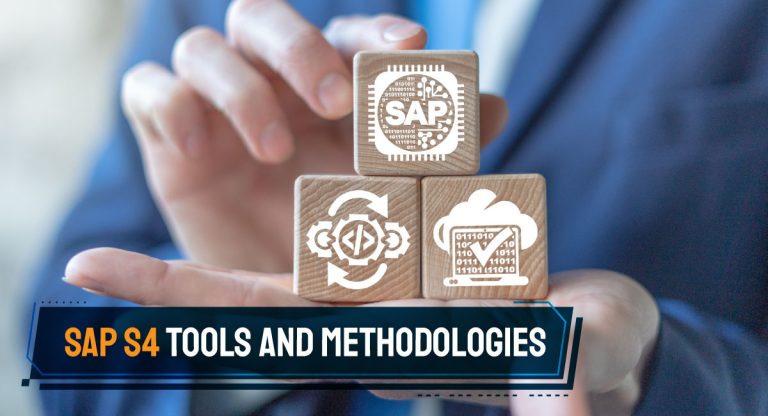Tag: SAP Analytics Cloud
“Our future success is directly proportional to our ability to understand, adopt and integrate new technology into our work.” – Sukant Ratnakar – CEO, Quantraz Inc.
Since the dawn of its creation, SAP has been an incredible partner for businesses and organizations. The creator’s dream, to empower customers with the ability to interact with a common database for an all-round range of applications in real-time, continues to thrive even today. Many businesses that are already SAP customers are migrating to the fresh and new S/4HANA module. This comes as no shock, seeing as how beneficial this module is to business process workloads and applications.
If you plan to make this smart shift too, keep reading to better prepare yourself for this adventure!
What Is S/4HANA?
Before we delve into the need and benefits of this new SAP module, let us first re-learn its basics.
S/4HANA is an ERP business suite built on the SAP HANA in-memory database that allows businesses to manage transactions and analyze company data in real-time. It is the central focus, or “digital core,” of SAP’s approach to helping clients go through digital transformation.
Digital transformation allows businesses to change current workload processes and models or build new ones. As a result, they are more equipped to adapt to shifting market conditions, client needs, and business requirements. According to 6sense, SAP S4/HANA currently has 25,595 satisfied customers across the globe, and according to SAP Insider, 24% of businesses have already migrated to S/4HANA.
The Need To Migrate!
Consistently upgrading and migrating to newer technology is a necessity for businesses today. Although you may feel like you have time before you absolutely need to upgrade to S/4HANA, it is imperative that you start the SAP S/4HANA transformation process as soon as possible. Listed below are two reasons why:
1. Time-Intensive Planning Requirements.
The conversion process may take two years or longer, depending on how complicated your system is. This is especially true if you want to pursue an agile and flexible strategy that reduces risks and effects on the business and offers an easier return on investment! Remember that for a successful and low-risk system conversion, data streamlining—including cleaning tasks, customizations, and licenses – must also be taken into account.
2. Avoid Chaos In 2027.
Starting in 2027, SAP Business Suite 7 (including SAP ECC 6) will no longer be supported by SAP. Their consulting partners will be in more demand over the coming years to assist companies with upgrades in order to meet this deadline. Experts in SAP and cloud computing are in high demand, and the longer you wait, the harder it will be to locate qualified assistants who will not take advantage of the hurry and charge exorbitant fees for their services.
Top Benefits
The benefits of migration are strong, which makes it all the more important to take that leap. Businesses will be able to concentrate on development and expansion rather than the technical details of integrating several IT systems when they use S/4HANA. According to studies, S/4HANA has the following benefits:
- 10%-15% lower logistics costs
- 25%-30% shorter manufacturing cycles
- 10%-15% higher productivity
Flexibility is the greatest perk of this module. SAP HANA offers flexible access to any users who desire to utilize it with ease.
Listed below are a few major reasons why you should migrate to S/4HANA:
1. Enhanced Accuracy Due To Analyses
Simplifying data structures and introducing the Universal Journal have made it possible to slice and dice data in real-time using the capabilities of an in-memory HANA database This accelerates accurate analysis. As a result, with a few straightforward visualization tools like SAP Analytics Cloud, you can quickly access precise data.
2. Simplification
Every piece of data is automated. This makes it easy for businesses to develop suitable strategies even when expanding. Real-time insights will also be referenced in the attractive layouts and user-friendly interface. As a result, businesses will be able to process data online and instantly modify things through devices.
3. Agile And Innovative
When implementing standard and commoditized business processes, you can concentrate on those that give you a competitive edge over your competition. It is considerably simpler to integrate with other best-of-breed applications due to the straightforward data structures and simple integration with the public cloud innovation platform. A flexible architecture is the foundation of invention and agility. Other benefits include increased productivity, enhanced user experience, resilience, and many more.
The Best Strategy To Migrate
The procedure of migration to S/4HANA is an important part of your business’s legacy. Simply put, this process includes two parts: first, to upload all applications and important workloads onto the cloud, and second, to upgrade to S/4HANA.
Listed below are 3 best practices to keep in mind during migration:
1. Preparing For Migration.
Your network needs to be ready for cloud connectivity before you can plan to migrate workloads to the cloud; this is effectively connecting your data center to the cloud. This step also includes deciding what to streamline, what you want to preserve, and what aspects to improve. Examine all your business data and separate what is important from the ones that need little to no attention.
2. Organize And Enhance Your Hybrid Landscape.
Nobody switches over all of their SAP operations from on-premises to cloud-based S/4HANA at once. Instead, SAP clients usually move the least important programs first, then add more as needed. It is necessary to identify the criteria for data conversion, data mapping, and data quality. Take it slow, giving proper attention to details.
3. Seek Out A Selectivity-Focused Migration Partner.
A good migration partner who focuses on SAP transformation projects might provide mix-and-match strategies that let you choose exactly which components to use in your S/4HANA migration. All your questions will be answered effectively, and they will be able to guide you throughout the transformation process and beyond.
How Can Fingent Help?
The secret to accomplishing your IT and business goals is choosing the best S/4HANA solution for your industry. Here at Fingent, our strategy combines preconfigured solutions, industry-specific templates, automation solutions, modular and agile frameworks, and the finest SAP activation methodology. Our unique and customized service has catered to many successful businesses.
We assist you in integrating strategy, technology, and processes to make sure that the right insights and procedures are driving your business. We have a team of professionals to help guide you through your migration process and help you make a success of your migration.
Give us a call today.
Stay up to date on what's new

Featured Blogs
Stay up to date on
what's new



Talk To Our Experts
Regardless of its size, every business needs to work seamlessly with perfect efficiency to stand out and be noticed. Among the many different essentialities that course through the veins of a business, data allocation and decision-making are two important ones. Although it may seem like just a part of the nitty gritty, it plays a paramount role.
In this article, we will understand what data allocation is all about, and we will familiarise ourselves with how SAP Analytics Cloud can help with data allocation.
Understanding Data Allocation
Before we move any further, let us first thoroughly understand data allocation. Data Allocation is essentially an intelligent distribution system that places your data fragments into sets to improve overall database performance. It also drastically reduces the costs of transaction processing and enables owners to distribute revenue, expense, and statistical amounts across multiple business units, departments, and even other businesses.
Traditional data systems such as data warehouses and relational databases have existed for nearly 30 years. Although “old is gold,” it does not apply in this case. These traditional, or quite frankly outdated, systems have many challenges that cannot always be overlooked. A few of these key challenges faced by traditional data allocation methods that lead to the creation of modern systems are –
- Large data is too big for traditional storage
- Data can be of higher complexity
- Data quality tends to drop during allocation
There are many reasons why data allocation is beneficial to a business in terms of its performance and decision-making; listed below are some of those benefits:
- Employees’ relief – data allocation removes a lot of unnecessary strain from accountants or employees as it eradicates the mundane nature of this task.
- Client satisfaction – An optimal resource allocation system identifies the most appropriate team with complementing skills that cross-section to deliver perfect results for the project.
- Increased decision-making accuracy – With the correct data and analytics tools, businesses can make accurate and appropriate decisions in real time, ultimately leading to an increase in accuracy and efficiency.
- Boosts risk management and mitigation – By allocating data, businesses have a better insight into any potential risks and can take proactive measures to mitigate them deftly. This can help your business avoid costly mistakes and prepare you for the impact of unforeseen attacks.
Introduction To SAP Analytics Cloud
SAP, short for Systems, Applications, and Products, is a leading software company founded in 1972. It is essentially a software supplier, and ERP software systems are created and supervised by SAP. SAP Analytics Cloud was released in 2015 and is a cloud product that offers services (SaaS) for business intelligence (BI), planning, and predictive analytics. Its united and highly secure cloud maximizes data-driven decision-making for businesses.
The three fundamental components of SAP are:
- Business Planning – for data collection and analysis
- Business Intelligence – for reporting, data discovery, and visualization
- Predictive Analytics – for future-proofing and compliance
The SAP Analytics Cloud comes with several benefits, including enterprise planning tools and tools to align your company’s expenses and cost strategies. These are helpful in fields like HR, Sales, IT, and Marketing.
The SAP Analytics Cloud’s allocations feature is a widely famous and useful tool for businesses to analyze and designate values on objects on the driver. Regardless of whether you are a seasoned SAP Analytics Cloud user or a novice to the platform, the cloud has a solution to almost any problem a user may face. With its seamless integration, enticing design, and advanced capabilities, this Cloud offers a compactable solution for large and small businesses with customizable dashboards, enhanced reporting features, and easy-to-use tools.
Read more: SAP Customer Experience: Creating Seamless Omni-Channel Experiences.
Optimizing Data Allocation With SAP Analytics Cloud
Optimization of data is the process of extracting, analyzing, and storing data for maximum efficiency. There are innumerable optimization tools on the internet, and although they each have their own unique features, SAP Analytics Cloud is known to be the best. With this solution, there is a wide array of optimization under-structures. A few of them are Browser/Client Optimization, Analytical Application Optimization, Story Optimization, Planning and Data Action Optimization, Network Optimization, and Backend Optimization.
SAP Analytics Cloud fulfills the needs of data visualization, budget planning, and predictive analytics perfectly. SAP developed it as an unabridged SaaS-based product that would have no shortcomings. It holds up this reputation by covering a wide range of needs, from data visualization, budget planning, and predictive analytics to automated data allocation, collaborative planning and budgeting, centralized data repository, and real-time integration.
Use Case: Successful Implementation Of SAP Analytics Cloud For Data Allocation
It must already be clear by now that SAP Analytics Cloud is a brilliant tool that can benefit any organization that uses it. Digressing from it will weaken your business’s reputation and functioning. This cloud system is put to extensive use in many sectors of society; three of the major sectors are:
- Financial Sector – It is used for large-scale budget streamlining and forecasting analytics processes.
- Manufacturing Industry – In this industry, the cloud allocates resources and optimizes production planning.
- Retail Sector – The retail sector has recently tapped into the potential of SAP Analytics, and they enjoy it completely by using it for managing inventory and demand chain predictions.
Best Practices For Implementing SAP
Similar to the implementation processes of many advanced technologies, even SAP Analytics Cloud has a set pattern to follow for maximum efficiency.
1. Define Clear Data Allocation Objectives And KPIs
Starting with a crystal clear vision always helps. Keep your Business Intelligence and Business planning locked and loaded before the implementation begins.
2. Collaborative Planning And Involving Stakeholders
This step is usually overlooked, but that would be a mistake. It is imperative to keep your business stakeholders in the loop for any implementation as it will cost the organization money, and stakeholders need to be able to organize a budget for it. Collaborative planning within the company will also boost the process and make it more secure.
3. Ensuring Data Accuracy And Integrity
This can be achieved through proper validation and cleansing. Running through multiple models before the final implementation is vital. Business data is highly confidential; therefore, ensuring its accurate integration and clear integrity is a top priority.
4. Continuous Monitoring And Optimization Of Data Allocation Processes
The last practice would be to complete maintenance after implementation. Aftercare is important. Keep an active eye on the cloud’s allocation processes and optimization habits.
Future Trends And Innovations In SAP Analytics Cloud
The SaaS service is an ever-evolving and continuously progressing service with new features consistently popping up. The future of SAP Analytics Cloud is bright, and investing in it at the earliest is a great way to be a part of this future. Three of the biggest trends and innovations in SAP Analytics Cloud are:
1. Integration With Emerging Technologies
The involvement of any form of advanced emerging technology already promises a skyrocketing rate of progress. These technologies will enable SAP Analytics Cloud with real-time integration and processing, among many other things.
2. Embedded Analytics And Real-Time Insights For Faster Decision Making
Alongside data allocation, SAP Analytics Cloud thrives in efficient decision-making. With its embedded analytics and consistent real-time insights, the whole daunting decision-making process will be overtaken by this cloud.
3. Predictive Analytics For Proactive Resource Allocation And Forecasting
Lastly, this cloud service is bound to enhance its predictive analytics for more appropriate resource allocation and demand predictions. This is probably the most impactful trend that can emerge in SAP Analytics Cloud as it can make your business future-proof and ready.
Read more: A Simple Guide To Handling Common SAP Errors & Troubleshoots.
How Fingent Can Help
Fingent provides certified experts for a client-centered service with transparency and good communication. These experts utilize the latest and fast-emerging advanced technology to make your SAP S/4HANA implementation process easy and flawless. We assist our clients through every step of the implementation process and even provide excellent post-implementation support by monitoring performance, addressing user feedback, and providing any necessary fixes.
Give us a call, and let’s talk about how we can make SAP Analytics Cloud work for you.
Stay up to date on what's new

Featured Blogs
Stay up to date on
what's new



Talk To Our Experts
SAP is widely known for its brilliant abilities and functionalities, the foremost being Data Analysis. The newest version of SAP ERP is the SAP Data and Analytics Solution. It has been making great strides in helping businesses make sense of their data and make intelligent decisions.
But before we dive into that, let us briefly understand what SAP is.
What is SAP ERP?
SAP, or Systems Applications and Products in data processing, is a powerful tool revolutionizing data handling. Its extraordinary data integration capabilities have helped businesses streamline data flow while storing common information securely and efficiently.
As SAP has evolved, it has become an ERP software compiled of many fully integrated modules that have found vital applications in human capital management, data analysis, production planning, plant maintenance, quality management, and more.
Read more: SAP S/4HANA: The Definitive Guide!
Understanding SAP Data and Analytics Solution
Now that we clearly understand what SAP is and what it does let us look into SAP Data and Analytics Solution. SAP has taken the same approach as any reliable technology that would find room to grow and improve itself. SAP Data and Analytics Solution titled SAP Datasphere was launched on March 8th, 2023.
SAP Analytics for cloud, also called SAP Datasphere, is a cloud-based Business Intelligence (BI) tool designed by SAP Company to provide all the vital functionalities of an analytic tool to business users.
Carefully engineered by SAP, this tool provides analytics compatibility from data received from various databases. This tool essentially converts the raw data collected from the transactional system into comprehendible insight to assist business owners in making better decisions.
The SAP Analytics feature solely depends on data algorithms, programming, and operations research to get data insight and to find meaningful information from data cumulated from multiple data sources. This data insight and information ultimately leads to better business planning and forecasting.
Key features provided by SAP Datasphere are – Business Intelligence, Augmented Analytics, Planning, Modelling, and Smart Transformation. Some benefits that business owners can reap from this solution include – high market profitability, more accuracy in the decision-making process, reduced downtime and performance obstructions. This is a reliable solution for many challenges faced by businesses.
How SAP Data and Analytics Solution Helps Businesses Maximize Data Value
SAP solutions are famously known for making the collection, storage, management, and analysis of Big Data from multiple sources easy and seamless. It takes out the complexity of data management with its suite of products and enables businesses to handle greater chunks of structured and unstructured data. SAP uses powerful AI-driven analytics, and this is an added benefit to organizations that want to enhance operational efficiency and customer engagement.
SAP’s new platform, in addition to all its predecessor’s capabilities, also allows businesses to gain meaningful insights into customer trends and likings in order to navigate smarter decision-making across the organization.
With SAP Data and Analytics Solution, a business can get greater value from their data in three notched forms:
1. Database
It effortlessly streamlines and upraises your landscape with advanced database technology that provides flexibility, multi-cloud support, and mixed workload processing to deliver impressive results.
2. Data Management
It caters to a set of technologically advanced tools such as Artificial Intelligence (AI), Machine Learning and The Internet of Things (IoT) to identify, compile, analyze, and draw out the most context-relevant data throughout the business enterprise.
3. Analytics And Planning
Finally, it freely gives people the power and freedom to discover, plan, and act on real-time on-site insights with technologically advanced tools to assist with planning and analytics. All this is combined with a trusted semantic layer.
Watch more: How ERPs like SAP help CFOs make crucial decisions simpler!
Overview Of SAP’s Analytics Tools
Among SAP’s many nifty and beneficial tools are three major analytics tools – SAP Lumira, SAP Business Objects, and Analytics Cloud. We will now look at the basic functionality of these tools and what they bring to the table.
1. SAP Lumira
SAP Lumira, earlier known as SAP Visual Intelligence, possesses many unique features allowing it to visualize and analyze data from many different sources. In a short period after IT had prepared a robust data model and exposed it to a Presentation Layer tool, business users flocked to create impactful visualizations with numbers, charts, filters, and rankings.
2. SAP Business Objects
This tool is a more centralized data reporting, visualization, and sharing suite. It transforms chunks of data into meaningful insights and is available anywhere at any time. Using a flexible architecture, the SAP Analytics platform simplifies, personalizes, and creates dynamic information consumption.
3. Analytics Cloud
SAP Analytics Solution with Analytics Cloud combines analytics and planning with a unique integration, allowing seamless access to multiple data sources. This tool facilitates trusted insights and integrated planning processes throughout the enterprise to help business owners make quick, informed decisions.
How To Identify the Right Tools for Your Business Needs
Selecting the right SAP Analytics Cloud tool for your business can be a daunting job, but it can be made easy by keeping these pointers in mind:
- It is imperative first to analyze your business needs. Gather your organization’s tech team, its investors, and all the people you need to make this decision.
- Once you have sorted out what aspects of your business could use a little push or improvement, scout out a suitable partner to team up with.
- Next, do a thorough background check on your new potential business partner and ensure that you contact referrals before you trust your business’ future in their hands.
- Lastly, take any advice your SAP service provider may offer and keep communication clear.
How Fingent Can Help in Leveraging the Best SAP Data and Analytics Solution
Fingent’s certified experts focus on client-centered transparency and offer complete services with a wide range of SAP products.
Selecting the perfect SAP product fortifies the success of your business. A few extra benefits you receive by partnering with Fingent are – improved security, efficiency in task completion right to the deadline, automation of the data collection process, and an overall 55% gain in productivity. Want to know more?
Give us a call, and let us help you.
Stay up to date on what's new

Featured Blogs
Stay up to date on
what's new



Talk To Our Experts
The pandemic put business challenges on an amplifier and made it look insurmountable. Here we all are though, crossing that barrier and making things work. Some challenges persist though. One area is the acceleration of the remote working scenario. Besides, sectors like manufacturing and Life Science have the challenge of accomplishing more tasks efficiently in less time.
This intimidating scenario drives the need for an intelligent enterprise. That’s exactly what SAP Business Technology Platform (BTP) empowers enterprises in all sectors. But what is SAP BTP?
This article describes what SAP BTP is. It also explains all that you must know about SAP BTP and how you can leverage it to grow your business and remain resilient.
Read more: It’s time to transform your business for the new digital age: Rise with SAP!
What is SAP BTP?
SAP BTP is an open platform as a service. It can integrate SAP and third-party applications and extend application capabilities. It can empower an organization to exploit data to solve its business problems.
SAP BTP can provide in-memory capabilities, core platform services, and unique microservices. It can help develop the exact application needed quickly, easily, and economically. All this without investing in local infrastructure.
It is a business-oriented technology platform for your SAP and third-party applications. It can unlock value and drive growth for its clients. SAP BTP unifies a plethora of technology stacks.
SAP BTP covers a wide range of functionalities. These range from document management to globalization, to blockchain and ML. Organizations can leverage SAP BTP services to automate business processes, manage decision logic. It also allows them to gain end-to-end process visibility.
But what is SAP BTP made of?
SAP BTP consists of four building blocks:
- Database and data management: This includes SAP HANA and SAP HANA cloud.
- Analytics: Including SAP Data Warehouse Cloud, SAC, and Business Objects BI.
- Application Development and Integration: Includes SAP Integration and Extension suites and SAP Process Orchestration.
- Intelligent Technologies: Including AI, ML, and IoT.
How Is SAP BTP Revolutionizing Business Operations?
SAP BTP can be used to build and extend SAP applications quickly. Here are the top three scenarios:
1. Integration
Most organizations prefer best-of-breed applications. With the journey to the cloud, the system landscapes are increasingly complex and business processes remain disconnected.
Today, most businesses have processes spanning from on-premise to cloud, and across multiple vendors. Plus, to complicate matters, some organizations continue to support their legacy applications along with various platforms and open-source technologies. SAP BTP allows seamless integration by simplifying development and quickening deployment.
Read more: Improve business planning with SAP Analytics Cloud!
These complex environments can only be managed with proper integration. While the value of these landscapes is decreasing, the complexity and cost of such integration are increasing.
SAP BTP can help organizations to refine and enhance their business operations along the entire value chain. It can do this by connecting applications, data, and experiences across SAP and beyond.
SAP Integration Suite uses a set of connectors and APIs to securely connect and integrate business processes. This can accelerate an organization’s time to value in a secure, sustainable, repeatable, and cloud-centric capability.
2. Data management
Today, we live in the age of data. But most organizations fail to get value from it. They gather the data and store it in disparate mediums. This only leads to a disrupted flow of information.
Your business success depends on how you analyze your data and what you do with the results. SAP BTP allows you to transform your data into value quickly and efficiently.
Data management is all about creating value from the data. If a business wants to exceed in today’s global economy, it must act on real-time business data. However, both the structured and unstructured data volumes create challenges for organizations.
Instead of accelerating digital transformation, data has become the anchor that is holding businesses in the old way of working. This has led to data swamps putting them in a worse position than they were ten years ago.
SAP BTP solutions are designed to provide flexible and user-first data management. It allows organizations to discover, connect, orchestrate data with internal and external data flows. This enables business leaders to access near real-time data and drive insight and value back into their businesses.
3. Extensibility
Businesses must continue to innovate rapidly if they want to stay relevant. During the pandemic, most businesses had to innovate their business models to adapt to changed circumstances such as local lockdowns and shortage of distribution chains.
As new businesses emerged with their reduced innovation cycles, they posed a serious threat to established businesses. Organizations must thus be empowered to build, extend, and enhance their application landscape so they can stay relevant while rapidly realizing new opportunities.
SAP Extension Suite allows organizations to access prebuilt extensions through an integrated digital marketplace. SAP BTP empowers businesses to speed up integration, find real business value from data, and extend SAP landscapes to innovate.
For example, let’s discuss the SAP Workflow Service. The SAP Workflow Service is part of the SAP BTP portfolio. This service allows businesses to extend their business processes. These extensions allow organizations to adopt business process changes quickly and in a non-disruptive way.
It provides unique monitoring applications that help monitor deployed workflows and their instances. Additionally, it also allows REST APIs to read, create, modify, or cancel workflow and task instances.
Integrating SAP Workflow Management with SAP Conversational AI allows organizations to leverage digital support for their workflows, process cycle times, recommendations. Plus, it allows them to reconcile both structured and unstructured workflows.
This can increase the level of automation enabling businesses to better manage overall complexity, reduce manual effort, and associated errors.
Read more:Top 7 benefits of adopting SAP Intelligent Robotic Process Automation
How can Fingent help leverage SAP BTP being SAP Silver Partner?
As SAP Silver partner, Fingent can apply design thinking and agile methods to develop industry apps on SAP BTP. We can help deliver innovative solutions with speed and agility.
When we combine our expertise at Fingent with SAP BTP, we can leverage disruptive technologies such as AI and predictive analytics and innovate across industries and business functions. This can help our clients extend capabilities, integrate intelligent technologies, generate actionable insights, and amplify results.
We can help our clients gain the flexibility of public or private cloud infrastructure to create an intelligent enterprise experience. Along with SAP BTP, Fingent can help your intelligent enterprise take a big step forward. Give us a call and let’s discuss how best we can help you.
Stay up to date on what's new

Featured Blogs
Stay up to date on
what's new



Talk To Our Experts
Which transformation path aligns with your business objectives? This is a critical question to ask when designing your business transformation journey. This makes it vital to take the time to know all the available options. It is also important to consider all aspects of each option and their implications before you embark on your business transformation. This blog will explain all you need to know about the new SAP S/4HANA Cloud 2111 release. It will also describe how SAP S/4HANA Cloud 2111 helps in solving business issues.
What is SAP S/4 HANA Cloud?
SAP S/4 HANA Cloud is an intelligent Enterprise Resource Planning (ERP) system. It has built-in intelligent technologies like ML, AI, advanced analytics.
It helps organizations smoothen their business transformation by assisting them in adopting new business models and managing business change at speed. Also, it can orchestrate internal and external resources while using the predictive power of AI.
SAP S/4 HANA Cloud can empower businesses to consistently outperform with instant intelligence and actionable insights. It can be implemented quickly and reduce support costs.
Now that we know what SAP S/4 HANA Cloud is, let’s understand what is the difference between the old SAP S/4 HANA Cloud version and the new version.
Read more: SAP S/4 HANA: Transforming CFO’s into a Business Value Creator and Role Model
Difference Between the Earlier SAP S/4 HANA Cloud Version And The New 2111 Version
Many think that SAP S/4 HANA Cloud 2111 builds on the earlier version. In fact, the latest version exceeds the earlier version. It has increased flexibility in the consolidation process. This means users can now create additional customer individual consolidation unit attributes. These help in defining validation rules.
SAP S/4 HANA Cloud 2111 comes with enhanced core consolidation rules. These include more flexibility in source and destination rules. Companies can now benefit from an improved ‘import consolidation master data’ app. This new feature helps users gain time and makes maintenance easier.
Along with many other enhanced features, SAP S/4 HANA Cloud 2111 now provides enhanced movement flow management. This means that SAP customers can have full control over the ‘default subitem’ field allowing them to edit and assign default subitems.
How Can Your Industry Leverage The New SAP S/4HANA Cloud 2111?
SAP S/4 HANA Cloud 2111 brings many exciting innovations to various industries. Here are some examples:
1. Manufacturing
The newer version has revised the SAP Fiori app. The ‘Maintain Tim-Dependent Stock Levels’ option is specifically designed for the manufacturing industry. It allows its users to display, create, and update time-dependent stock levels for specific materials.
Manufacturers can define safety stock levels based on validity intervals. This enables them to react to varying demands dynamically. By ensuring sufficient stocking of products at all times, users can reduce deficiency risk.
2. Supply chain management
To support supply chain management SAP Fiori app is enabled to support split valuations in the goods-receipt process. This allows users to create their own global valuation types.
3. Service companies
SAP S/4 HANA Cloud 2111 has enhanced service order planning based on spare part reservations. This enables customer service managers to gain better insights into stock availability and to ensure that planned quantities of spare parts are always at hand. Such accurate service order planning ensures on-time delivery.
4. Finance
SAP S/4 HANA Cloud 2111 provides SAP Fiori apps in ‘collections and dispute management.’ This modernized process offers extensibility options that help the app deliver a seamless user experience.
These new apps improve the process of collecting receivables and handling dispute cases. Along with several other features, it provides in-depth data insights to its users.
Read more: 6 Capabilities of SAP S/4HANA That Will Help You Become An Intelligent Enterprise
4 Top Challenges SAP S/4 HANA Cloud 2111 Helps Resolve
1. Project management
The latest release SAP S/4HANA Cloud 2111 allows project managers to plan, trigger and monitor materials or services enabling them to ensure on-time delivery.
Here is how it helps resolve challenges in project management:
- Date alignment is accelerated by reducing manual efforts leading to more accurate planning of project demands.
- Purchase contract for specific demand.
- Automatic demand blocking prevents requesting for unrequired demands.
- It provides a comparison chart for improved monitoring.
2. Sales
SAP Self-Billing Cockpit allows users to receive and process self-billing messages, edit messages, and receive multiple order reasons and condition types in case of errors or differences. This latest feature offers a central entry and overview page to its users, leading to a more efficient sales process.
3. Product compliance
Monitoring of substance volumes will help users to comply with chemical regulations. It is integrated with the logistic processes of purchasing and manufacturing.
Substance Volumes Tracking feature enables users to identify possible risk factors. It can track, calculate, monitor volumes for substances either imported or produced within the country.
This will help users to define legal entities and map production plants. Thus, it increases transparency by directly linking the aggregated substance volumes to the original logistic documents.
4. Asset management
SAP S/4HANA Cloud 2111 introduces four process phases:
- Reactive maintenance
- Proactive maintenance
- Improvement maintenance
- Operational and overhead maintenance
Process phases help in creating specific maintenance requests for technical objects like functional locations or a piece of specific equipment.
These requests allow users to store relevant information that will help the employees to identify and solve any problems that might occur. Such simplified work requests for maintenance reduce the unnecessary effort for logging maintenance issues.
Read more: How Fingent Helps CFOs Gain New Insights and Reliably Enable Key Decisions
How Does Fingent Smoothen Your Transit To SAP S/4HANA Cloud 2111?
SAP S/4HANA Cloud 2111 can empower your business to stay relevant and competitive. Fingent is a leading SAP Silver partner. To be classified as an SAP silver partner there are certain rigorous criteria that a company must meet around SAP certification and dedicated SAP resources.
We offer a broad range of services under the umbrella of SAP. This includes business consultation, implementation, and post-implementation services and support.
Take a look at our Case Studies to see how we have implemented various aspects of SAP for our clients.
We work with our customers from pre-planning through to project execution and application support. We assure you that you will receive the best possible care in the long term. Give us a call and let’s discuss your project.
Stay up to date on what's new

Featured Blogs
Stay up to date on
what's new



Talk To Our Experts
“By failing to prepare, you are preparing to fail.” – Benjamin Franklin
Profound words that underline the importance of business planning. Business planning is the right strategy to ensure business productivity. With business getting more complex and planning tools filling up shelves, enterprises need a more straightforward way to manage business plans and improve sales. Only a few of the many products available have a holistic end-to-end approach to information analytics services.
SAP Analytics Cloud is a distinct analytics tool. It integrates analytics throughout the business process and across every level of an organization. It is an impeccable and compatible solution for enterprises that are involved in sectors like manufacturing, finance, and sales. This is an effective cloud-based tool that can analyze the data irrespective of the size of your firm. Plus, it allows you to transform this data into charts, tables, graphs, and more.
This article will help you determine how SAP Analytics Cloud enables enterprises to improve business planning. Read on to check out the features that will let you boost your business and help you stay competitive.
Top Two Features Of SAP Analytics Cloud For Effective Enterprise Planning
SAP Analytics Cloud is the first and the only tool in business intelligence that caters to all aspects of the business. It assists you in organizing and managing your data visualization, business planning, and predictive analysis.
Here are the SAP Analytics Cloud core planning features:
1. Augmented Analytics
Augmented analytics capabilities can help existing AI-powered analytics to offer business insights in real-time. You can add these capabilities to business planning and workflows. This contains an enhanced ‘Search to Insight’ capability allowing users to ask questions about data in natural language. Further, it can automate insights that include values and simulations.
The ‘Smart Predict’ feature can help train models to predict future outcomes without manual intervention. This enhances user experience allowing business analysts to predict future outcomes more accurately and automate decisions, preventing time lapse. Ultimately, SAP Analytics Cloud smoothens the process and improves business management.
Read more: SAP Analytics Cloud: Creating Dynamic Visual Stories
2. Enterprise planning
Collaborative enterprise planning ensures one version of the truth across the enterprise. Thus, it brings users together to align with the plan leading to better business outcomes.
The zero-based budgeting feature helps allocation of resources efficiently. The embedded collaboration tools ensure that every member of the finance team is aware of relevant information while they discuss finance issues. Plus, all the relevant budget templates are recorded and saved for the quick action and enhanced productivity.
SAP Analytics Cloud allows its users to analyze, plan and predict at one location. This can speed up planning cycles and help make informed decisions. Built-in features such as financial modeling, automated reporting enable enterprises to make better end-to-end planning decisions.
Planning and consolidation applications allow businesses to connect complex planning processes to the cloud. Thus, enterprises can create business plans and adjust them within the SAP Analytics Cloud. This allows enterprises to extend and align their plans across the organization leading to better outcomes.
Read more: Business Intelligence in SAP: How It Helps You Become a Data-driven Organization
Features That Improve Agility In The Enterprise Planning
1. Data and data visualization
Data visualization represents your entire business process. It is this important to find all the possible ways of viewing and understanding the data at a glance. This is where SAP Analytics Cloud can help. It can help make your data highly visible. These analytics offer quick answers to critical questions that can improve your business decisions.
Businesses need to gather enormous amounts of data each day from all their departments and other sources in sales. The next challenge is storing all this data in a secure place. SAP Analytics Cloud is the perfect place to store your data as it is most secure and easily accessible to all relevant people in your organization.
Read more: 7 Crucial Business Challenges Solved by SAP Analytics Cloud
2. Models
You do not need technical expertise to create a model from unrelated data sets of your company. It is quite similar to adding data to a story. Depending on the type of data, your models can either be simple or complex.
In any case, models help you organize present your data so that you can gain insights into your business. The models in SAP Analytics Cloud organize and present the data in rows and columns. This offers a unique, clear view of your data that is ready for analysis.
3. Stories
Stories occur in two phases: data view and pages. These two capabilities can enable you to gather data and connect it to create a model. This model is refined when you add data to make a story. These stories can empower you to make quality decisions for the success of your business.
What Are The Benefits Of SAP Analytics Cloud?
SAP Analytics Cloud offers many benefits for enterprises that are on the SAP. Here are a few:
1. Access data on the fly
SAP Analytics Cloud can be integrated to work both on Android and iOS devices alike. It allows your users to manage all their business activities even on a small screen from anywhere, at any time.
In today’s fast-moving world, your finance team needs the ability to create viable forecasts at a moment’s notice. Using SAP Analytics Cloud will enable your business process to remain proactive, not reactive.
2. Real-time insights
SAP Analytics Cloud functionalities allow all relevant users to generate instant insights to enhance decision-making and improve business outcomes.
3. No more silos
SAP Analytics Cloud allows for integrated planning across your organization. This means you can rest assured that all those involved in the decision-making process have the whole picture, not just a small part.
4. Customized dashboard
Enterprises are always on the lookout to improve data visualization, which helps in having a better interface for successful operations. Thankfully, SAP Analytics Cloud allows its users to customize their dashboards to help them navigate through the system and offer a personalized look. This way, business owners have relevant data on their interface just the way they like it.
5. Increased efficiency
SAP Analytics Cloud facilitates easy collaboration across your organization. This allows for quicker approvals, contributions, and comments. Plus, automation and ML helps in creating plans that are more productive, leading to faster results.
6. Minimize errors
Integrating SAP Analytics Cloud with SAP S/4HANA will allow the enterprises to minimize or eliminate errors that occur while making changes on multiple files on the cloud. You can make changes without manual intervention in the source system.
Read more: SAP S/4HANA Journey: 8 Ways C-level Leaders & Executives Can Derive Business Value
Power Charge Your Business
SAP Analytics Cloud is unique. It offers businesses real-time data to manage their resources effectively. Their tools keep getting newer updates to make it more reliable. As an SAP Silver Partner, Fingent has the expertise necessary to help you make the best use of this power-packed tool. Let us discuss your business and see how SAP Analytics Cloud can help you. Call us.
Stay up to date on what's new

Featured Blogs
Stay up to date on
what's new



Talk To Our Experts
The greatest business challenge of our time is the steady acceleration of change in all areas of trade. The pandemic has only accelerated these digital shifts. Transforming your business is necessary to stay relevant and competitive. The scale of digital challenges can be daunting to businesses. Understandably, some businesses may feel lost in the current digital maze. But, to stay agile and competitive, business leaders must strategically transform their business. Early this year, SAP announced a new service called “Rise with SAP.” This blog attempts to clarify what is included in Rise with SAP and how it can transform your business.
What is “Rise with SAP”?
Rise with SAP is a BTaaS (Business Transformation as a Service). The objective of this product is to accompany and accelerate business transformation step by step.
Rise with SAP is a single subscription contract. It provides access to a variety of tools and services that focus on assisting with your business transformation efforts. It is a new way to redesign processes for better business outcomes.
Rise with SAP can help your company to adapt business processes on your timeline and your terms. It helps them continuously unlock new ways of running businesses to stay ahead of the competition. It can speed up the otherwise sluggish adoption of SAP S/4HANA.
Read more: SAP S/4HANA: Redefining End-To-End Solution
How Is “Rise With SAP” Transforming Businesses?
Rise with SAP can holistically transform your business with a fast time to value, regardless of your starting point. Rise with SAP is like a moving company that provides a checklist, packers, containers, and services like replacing old appliances and installing new ones. It provides a blueprint that a company can implement on its own terms and at its own pace. What is the benefit? One contract and one responsible party for all services. It simplifies your journey in four simple steps.
Step 1: A business model redesign
This step helps businesses redesign and optimize business processes and implement the best practices in their verticals. In other words, it is a way to analyze how your business processes perform and obtain tailored recommendations.
A successful digital transformation project requires IT and business leaders to work together. This is why this analysis motivates all in your business to adapt to new business models.
Step 2: Alignment with customer journey
This is the key element of Rise with SAP. SAP realizes that each organization requires a unique path forward. Here are four starting points for digital transformation:
- Digitally grown startups and other innovators that need to scale with speed
- Companies that began their journey into the new world of modular ERP cloud applications are now ready to go further
- Organizations that have started digital transformation at the outer edges, now need to focus on their core
- Companies with a long heritage and history with a complex on-premises system
Realizing the fact that each of these starting points requires a unique path, Rise with SAP provides a highly customizable, subscription-based model.
Step 3: A technical migration
Rise with SAP includes technical services that ensure painless migration to a standard, modular, and flexible landscape. Such a flexible landscape with a consistent data layer enables businesses to react faster to ever-changing business demands.
This includes essential services from SAP and their partners. These services help eliminate modifications and custom code. Besides, it aids in harmonizing and governing a company’s data layer. Such accurate data will help businesses make informed decisions and strategize their business processes for greater advantage.
Step 4: Build an intelligent enterprise
Each company’s roadmap to success may vary but the destination is to become a digitized and intelligent enterprise. Quickly adopting S/4HANA is the key to reach that destination. To that end, Rise with SAP offers a powerful solution to get there by eliminating roadblocks and enabling its customers on their journey.
SAP believes that their customers can realize the value of their investment with up to a 20% reduction in TCO over five years as compared to a traditional ERP deployment. Definitely worth looking into, wouldn’t you say?
Read more: SAP for Business: 9 Ways to Maximize Business Performance
Components of Rise with SAP
An ideal business transformation process requires a selection of coordinated components. Rise with SAP consists of five such components that serve as the basis for transformation.
- Business process intelligence: It helps in understanding, visualizing, and transforming your processes.
- SAP Business Network “starter pack”: The intelligent enterprise “starter pack” includes SAP Business Technology Platform. This platform provides a single semantic layer across your organization. It serves as the basis for business transformation.
- Cloud credits: The “starter pack” also includes an ERP system with built-in intelligent technologies. This enables your business to transform with intelligent automation. Plus, the starter pack also provides credits for accessing SAP Business Network. This allows companies to better manage their supply chains and react quickly to market changes.
- Embedded tools and services: Ensure pain-free business migration to the SAP S/4HANA Cloud.
- SAP S/4HANA Cloud: Rise with SAP provides access to the company’s modular cloud ERP solution.
How Can Fingent Help Leverage These Benefits?
Rise with SAP provides access to a comprehensive bundle that can help streamline your business transformation. However, for successful implementation, you will also need an experienced partner that can provide advisory, implementation, or application management services.
Here is where Fingent can help you. As an SAP Silver partner, Fingent has acquired a wealth of experience to provide you with a structured set of services that complement Rise with SAP.
1. Advisory services
Before you embark on business transformation, you need to assess several aspects. These include trends in your industry, assessment of your business, your existing technology environment, and opportunities for future business growth. Working with an experienced partner such as Fingent can make all the difference. Our strategies can eliminate obstacles to unlock new business value.
2. Implementation services
As an SAP Silver partner, Fingent can provide a range of implementation services. We can tailor implementation strategies to help you achieve your business objectives quickly and efficiently.
3. Application management services
Fingent offers a full set of solutions that move beyond tactical efficiency gains. We provide flexibility and the latest strategic capabilities that smoothen business transformation and innovation.
Read more: How Fingent Enables e-Invoicing for SAP Users to Stay Compliant with GST India Regulations
Over to You
Rise with SAP is likely to galvanize the market to be the most cost-effective way to move to SAP S/4HANA. It will help overcome many hurdles that SAP ERP customers are facing. Give us a call today and let’s get talking on how to get you on to this new dynamic tool asap.
Stay up to date on what's new

Featured Blogs
Stay up to date on
what's new



Talk To Our Experts
Streamline And Enhance Your Warehouse Management Operations With SAP EWM
Worldwide, companies spend an average of €300 billion a year on warehousing, either in-house or through third-party logistics. The rise of eCommerce and the growth of global supply chains increase warehousing operations costs for enterprises. In addition, with the pandemic heightening consumers’ interest in eCommerce, they expect instant delivery of products. To cater to this dynamic demand, some logistic companies increased the number of their seasonal employees. With this demand continuing to rise, it becomes imperative that warehouse management processes be optimized.
Read more: Warehousing Management System: Simplify Operations & Scale Your Business
Warehouse management is currently undergoing a modern-day makeover to meet growing demands. Therefore, industry leaders must take steps to optimize warehouse management to keep pace with faster requirements and ever-increasing volumes. SAP Extended Warehouse Management (SAP EWM) streamlines, simplifies and optimizes your warehouse operations. This blog considers how SAP EWM can benefit your business.
Challenges In Supply Chain Management Today
Supply chains are at the core of business operations. Therefore, supply chain management needs to overcome several challenges that impact the bottom line of their business.
Read more: Top Challenges Faced By Logistics Management Today
Here are some challenges companies should be aware of:
1. Identifying Bottlenecks In Customer Service
Customers’ demands have become extremely specific. Plus, they expect to be notified about any possible delays. Therefore, supply chain management can benefit from advanced planning and scheduling systems that can help them identify bottlenecks. This can help them prevent delays or notify the customer of a possible delay.
2. Gaining High Supply Chain Visibility
Overall production cost is affected by several factors that go unnoticed. High supply chain visibility will help the management increase the system’s efficiency and eliminate wasteful steps. Such visibility can contribute to cost control.
3. Finding The Right Talent
Hiring and retaining the right talent has become increasingly difficult. Hence, it is beneficial to have a performance tracking system that allows you to gauge employee productivity and spot the right talent that could be trained effectively.
4. Ensuring On-time Delivery
Delivering goods on time is another challenge that can make you lose your customers to your competition. You can resolve these challenges with planning and scheduling software. It can help you receive and deliver the material on time.
5. Maintaining An Agile Production Plan
Lack of an agile production plan that does not reflect market changes can lead to inefficiency of production. You can remain agile by having a planning and scheduling system. This system helps you keep a tab on the effect of market changes without disrupting your current schedule. Those insights equip you to make the best decisions in response to those changes.
How SAP EWM Can Benefit Your Business
Statista forecasts the global warehouse automation market to surpass 30 billion U.S. dollars. And, Zebra warehousing vision study shows that 80% of organizations plan to invest in new technologies to be competitive. And 27% plan to utilize full automation by 2024. SAP EWM helps you capitalize on this.
Read more: How Robotics In Logistics Helps Improve Supply Chain Efficiency
SAP Extended Warehouse Management (EWM) is fast, agile, and powerful. It is designed to future-proof current supply chain technology and help your business grow.
SAP EWM can be deployed into many business environments. It can support both simple and complex warehouse processes at the granular level. It is a high-speed system that makes supply chain management more accessible and more efficient. SAP EWM can be configured to the organization’s specific needs and can be streamlined over different locations.
Here are some other ways your business can benefit from SAP EWM:
1. Optimize Task Management
In a standard warehouse, one person can be seen going to the same stock bin several times during the day. This happens when all orders that need to be picked for a day appear together, making it difficult to break them down.
You can optimize the picking process with SAP EWM. The platform uses various algorithms to employ the most efficient way to complete as many tasks as possible. This prevents pickers from wasting their time as they have to tread the same path constantly. Plus, SAP EWM’s voice picking functionality enables shorter search time and minimizes errors.
Read more: How SAP Helps Realize Voice-enabled Warehouse Operations
SAP EWM can easily integrate all processes to provide easy end-to-end operations management. It can take the burden off your team for outgoing shipments allowing them to tackle inevitable snags that need to be addressed.
You can link SAP EWM with your transportation management system for greater accuracy for delivery targets. It provides your company a holistic outlook alerting your team when to expect delays and other time-sensitive information.
2. Streamline Labor Management
Efficient use of time, effort, and resources can contribute to business growth. This is another point where SAP EWM can integrate with your WMS. The platform can provide structure in the workplace. With a good framework, each worker knows their location and responsibilities. Such an organized structure will help your employees enjoy more efficient task allocation.
SAP EWM generates real-time insights on workers’ performance, enabling managers to offer more constructive suggestions to improve efficiency. Subsequently, your employees develop more efficient and consistent work habits.
3. Control Costs
Not following the first-in, first-out method for perishables and inefficient use of space and labor can increase wastage. SAP EWM can help reduce wastage of perishables by identifying which units need to be picked first.
SAP EWM can maximize the use of the warehouse space by optimizing the location for each pickup time. It optimizes your space and the travel path of the pickers. All this will reduce your on-hand inventory and reduce your space costs without compromising on quality.
4. Boost Customer Relationship
SAP EWM can reduce delivery lead times and order accuracy errors. This increases customer satisfaction and results in more sales. Thus, SAP EWM elevates and improves relationships with your suppliers and end customers.
Read more: Logistics Management Software – Everything You Should Know
Leverage SAP EWM Capabilities With Fingent
Logistics providers must evaluate the best warehousing management solution for their specific needs. If your business is at a crossroads in choosing the best option for your warehouse operations, Fingent is here to help. Feel free to contact us to learn more about how SAP EWM can transform your business.
Fingent is a certified SAP silver partner and has assisted global businesses in successfully implementing SAP EWM. Our experts can guide and help you explore the flexibility in deploying SAP EWM and ensure it is the best fit for your specific business requirements.
Stay up to date on what's new

Featured Blogs
Stay up to date on
what's new



Talk To Our Experts
Streamlining SAP S/4HANA Migration with Selective Data Transition
Though the COVID-19 pandemic accelerates digital adoption among industries, the journey towards Intelligent Enterprise can be complex. Typically, this begins with establishing an intelligent core like SAP ERP. However, even migrating to a new system is more than just a simple upgrade for many companies. With several years of historical business data across complex system landscapes, companies will have to adopt a specific migration approach to SAP S/4HANA. A well-defined migration approach will help businesses ensure business continuity, embrace innovation, and stay relevant and competitive. This post will look at SAP S/4HANA Selective Data Transition Engagement and how this approach accelerates SAP S/4HANA migration.
Read more: Deploying SAP S/4HANA: Tools and Methodologies to Adopt
Two Popular SAP S/4HANA Migration Methods
There are two popular methods to manage SAP S/4HANA migration.
1. Greenfield migration
The first option is the Greenfield approach or a complete re-engineering (new implementation). However, the limitation of this approach is that you cannot migrate your historical data and so cannot take advantage of the latest intelligent features you need for your company’s historical data to work.
2. Brownfield migration
The second option is the Brownfield approach that allows migrating high volumes of historical data (system conversion). However, moving a vast amount of historical data could leave you with more data that could be non-compliant with data privacy laws. Also, this approach could leave you with a lot of irrelevant data in your newly configured system.
As both these options offer certain limitations, SAP formed a brand-new approach, the SAP S/4HANA Selective Data Transition Engagement, that makes your data migration to SAP S/4HANA a lot easier.
What is Selective Data Transition?
Selective Data Transition, also known as Hybrid Approach or Landscape Transformation, is an alternative to the New Implementation approach (Greenfield) or System Conversion approach (Brownfield). It allows you to consolidate several ERP systems to one central SAP S/4 HANA system. Selective Data Transition is vital for companies moving from an existing SAP ERP solution to SAP S/4HANA on-premise or SAP S/4 HANA cloud (private edition).
Just like an inland river delta flowing into the ocean, Selective Data Transition allows you to migrate only a relevant selection of your existing ERP data to SAP S/4 HANA. So, if you’re on SAP ECC planning for transition to SAP S/4HANA, then selective data transition is one of the best approaches to move to SAP S/4HANA.
Case Study: Thermo Pads partners with Fingent to migrate from ECC 6 to SAP S/4HANA. View Case Study
Business Benefits of Selective Data Transition Approach
- Selective data transition avoids business disruption when moving to SAP S/4HANA and enables you to go live according to your business needs. In general, this approach allows for a single go-live, moving several organizational units or roll-out in multiple phases, for example, by country.
- This approach enables you to migrate only your relevant historical data and retain a consistent process chain while leaving behind obsolete data, for example, outdated company codes.
- Selective data transition helps you define your speed and combine single projects such as a new go-live implementation, finance management, etc. while moving to SAP S/4HANA in a single step or a phased approach.
- With SAP S/4 HANA, you can introduce new business processes and manage your historical data while protecting good practices and previous investments.
- The near-zero downtime approach restricts the technical downtime to just a few hours.
- Selective data transition can help change your landscape by either splitting or consolidating existing systems.
Read more: 7 Tips to Ensure a Seamless Transition to SAP S/4HANA
Customize Your Selective Data Transition Approach with Fingent
Selective Data Transition Engagement is a great way to balance between redesign and reuse. It can happen across various scenarios for companies of different sizes to support a smooth transition to SAP S/4HANA. This approach provides a suitable IT landscape for every company’s unique needs. Selective data transition goes beyond the standard implementation as it offers several options for customers to choose from, based on their current landscapes and future needs.
You can work with Fingent and define the appropriate structural changes that need to be considered during data migration, along with any business processes that may need to be modified or redesigned. Our tailored approach has helped many of our customers to increase their flexibility to adapt data and processes in just one step.
Read more: SAP S/4HANA journey: 8 ways C-level leaders and executives can derive business value
With Selective Data Transition Engagement, companies can even take advantage of select innovation and modify their business processes to facilitate the use of the latest tools and functionality without the need to start from scratch.Companies having mature SAP landscapes can clean up their environments while retaining those investments that matter most and lower their transitions by bypassing preparation projects.
Selective data transition can even help split some of your projects between the cloud and on-premise. It also allows you to restructure and consolidate your environments as you want. But, most importantly, this approach helps you save time by combining all tasks in just one step.
Read more: 6 capabilities of SAP S/4HANA that will help you become an intelligent enterprise
So, if you are interested in learning how the SAP S/4HANA Selective Data Transition Engagement can help your organization accomplish successful migration, don’t hesitate to contact Fingent. We are an SAP Silver Partner and have the expertise in this area to expedite your intelligent enterprise journey.
Stay up to date on what's new

Featured Blogs
Stay up to date on
what's new



Talk To Our Experts
Dynamic visual storytelling using SAP Analytics Cloud can reimagine your business intelligence, analytics, and reporting with real-time data. Here’s how.
“Storytelling is our obligation to the next generation. If all we are doing is marketing, we are doing a disservice, not only to our profession but also to our children and their children. Give something of meaning to your audience by inspiring, engaging, and educating them with story. Stop marketing. Start storytelling.” These impactful words from Laura Holloway, Founder & Chief of The Storyteller Agency, sets the tone for this article.
Business storytelling is a powerful communication tool. It is a process and approach that helps establish a brand’s identity by making its message meaningful and memorable.
SAP Analytics Cloud helps you create this impact by creating visual stories with your brand or product in the spotlight. Moreover, it can help your product or brand stand apart in its essence and what it stands for. Visual storytelling contributes to your brand’s alignment with customers who ascribe to the same beliefs.
This blog discusses how SAP Analytics Cloud helps analysts create dynamic visual stories and how businesses can benefit from the same.
What is SAP Analytics Cloud?
SAP Analytics Cloud is a solution in the SAP portfolio to meet the needs of data visualization in the cloud. It enables analytics (analysts) to create storyboards about your products and services faster. SAP Analytics Cloud empowers all businesses to shape their ideas in the form of fun-filled, illustrative stories.
Interestingly, studies have revealed that the human brain processes visual information 60,000 times faster than text. Defining products and services has always involved long functional specifications. As a result, they are easily misinterpreted and cannot be validated by the users. On the other hand, SAP Analytics Cloud can help analytics create dynamic visual stories that show the value of your ideas and product vision making messages more memorable and understandable.
SAP Analytics Cloud is delivered as an all-in-one, SaaS-based product. Its primary function is to create data reports that originate from various sources such as real-time data, budget forecast data, or data formatted as an MS Excel table. This solution is intuitive and user-friendly, allowing users to produce reports of varying complexity with complete autonomy.
Analysts understand that data can be a powerful influence only when it is presented in the right way. Mind-numbing spreadsheets or uninteresting charts can be turned into powerful and appealing stories with the help of SAP Analytics Cloud. Undeniably, data has a lot of potential. With an expressive storyline, you can unleash the potential of the data making it convincing and remarkable.
Read more: 8 ways business intelligence in SAP serves as your centralized suite for data reporting
Top 5 benefits of SAP Analytics Cloud
SAP Analytics Cloud is a pre-configured ready to deploy true cloud solution. It is convenient, secure, and can scale with a business of any size. Consider 5 top benefits of SAP Analytics Cloud.
1. Gain insight into what drives your business
SAP Analytics Cloud is powered by augmented analytics features driven by AI and ML technologies. So, you can automatically gain insight from any level of detail and use those key influencers of past results to predict future scenarios and outcomes.
2. Create dynamic visual stories for better decision making
Hasty decisions made on assumptions can have disastrous consequences for your business. Conversely, you can make informed decisions by interacting with visualization as you can create dynamic visual stories based on your critical business areas with trusted data. Furthermore, this solution allows you to investigate thoroughly and answer essential questions of business on the fly.
3. Simplify analytics landscape
As SAP Analytics Cloud seamlessly integrates with your data and planning solutions, you can connect to data from multiple sources. This simplifies your analytics landscape, enabling you to get the complete picture and make better decisions.
4. Drive better business outcomes
Your organization can gain complete alignment across all business aspects by aligning financial, strategic, and operations planning in SAP Analytics Cloud. Subsequently, you can now predict future scenarios and outcomes with collaborative enterprise planning in one simple cloud solution.
5. Strategize with business growth in view
Strategic planning ensures business growth and helps businesses to remain resilient despite challenges. Collaborative enterprise planning empowers you to create a fact-based plan for your business’s success. Moreover, it allows you to modify your planning data when required to drive better budgeting, forecasting, and analysis for your business growth.
Read more: 7 crucial business challenges solved by SAP Analytics Cloud
SAP Analytics Cloud help analysts tell a story with your data
Just as in writing or speaking, analytics must keep their data design simple, crisp, and to the point. Telling a compelling, dynamic visual story requires both common sense and imagination. Here are some best practices to follow:
- Consider your target audience and identify what they already know about the subject.
- Ensure the colors and style are unique to your story to avoid confusion.
- The arrangement of the dashboard must be self-explanatory and user-friendly.
- Use symbols, icons, and pictures to help your audience understand the story at a single glance.
- Do not just beautify the visuals. Instead, explain the data.
Read more: Healthcare analytics reaches new heights with SAP HANA
Use cases of how SAP Analytics Cloud helped create dynamic visual stories
Use case 1: A conservation society in Australia improves its operations with data-driven decisions
Taronga is a non-profitable organization that works to create the next generation of conservation champions. With the help of cutting-edge technology by SAP Analytics Cloud, Taronga is leveraging its data to improve operations and expand its impact. It is experiencing transparency, flexibility, and scalability while streamlining and digitizing all its business processes.
SAP Analytics Cloud provided Taronga access to real-time reporting that enabled the organization to make data-driven decisions which in turn contributed to a positive impact on wildlife conservation and enhanced visitor experience.
Use case 2: A dairy cooperative in Belgium makes informed decisions with real-time financial reporting
Milcobel is the largest dairy cooperative based in Belgium. It is a vast company that processes and commercializes 1.8 billion liters of milk from 2,400 dairy farms. The larger the organization, the greater the volume of data. So, Milcobel chose to implement SAP Analytics Cloud along with other SAP solutions. This implementation resulted in the reduction of time-consuming manual processes.
Moreover, it provided real-time data to the financial team to better understand the product margins and profitability of each of its dairy plants. Thus, the leaders can now trust that they are confidently making informed decisions based on up-to-date data. In addition, SAP Analytics Cloud ensures that all users have access to real-time data. Consequently, Milcobel has control and flexibility over their data quality and can benefit from an end-to-end strategy that combines data volume, quality, and usage to create data value.
Read more: SAP S/4HANA journey: 8 ways C-level leaders and executives can derive business value
Beyond visual storytelling
The capabilities of SAP Analytics Cloud go far beyond just visual storytelling. As an SAP Silver Partner, Fingent has worked with many clients globally and helped them bring out the best from their business using the SAP Analytics Cloud landscape.
Read more: How Fingent helps CFOs gain new insights and reliably enable key decisions
Fingent will help you create a cloud-first business environment, provide data visualization and reporting solutions, and empower your company with unparalleled business intelligence while leveraging your existing cloud and on-premise data solutions. What more could you ask for? Well, there is a lot more, and Fingent can help you tap into it all. So give us a call, and let’s get talking.
Stay up to date on what's new

Featured Blogs
Stay up to date on
what's new




